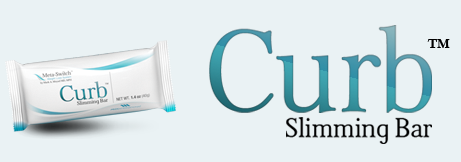Eat More Fiber = Lose More Weight?
Well not exactly, meaning that you can't eat high fiber with a Big Mac for lunch and Whooper for dinner and expect to be dropping the LBS. But if you are eating a healthy and balanced diet adding more fiber sure does help you to maintain you weight or take off some extra pounds.
What Is Fiber
The word fiber (North American) can also be spelled fibre (British). It comes from the Latin word fibra, meaning fiber, thread, string, filament, entrails. According to the Medilexicon medical dictionary, dietary fiber means "Nutrients in the diet that are not digested by gastrointestinal enzymes." Fiber, in this article, refers just to dietary fiber.
Fiber is also known as roughage. It is the indigestible part of plant foods that pushes through our digestive system, absorbing water along the way and easing bowel movements.
(Credit MNT)
Did You Know There Are 2 Types Of Fiber?
Soluble fiber is "soluble" in water. When mixed with water it forms a gel-like substance and swells. Soluble fiber has many benefits, including moderating blood glucose levels and lowering cholesterol. The scientific names for soluble fibers include pectins, gums, mucilages, and some hemicelluloses. Good sources of soluble fiber include oats and oatmeal, legumes (peas, beans, lentils), barley, fruits and vegetables (especially oranges, apples and carrots).Insoluble fiber does not absorb or dissolve in water. It passes through our digestive system in close to its original form. Insoluble fiber offers many benefits to intestinal health, including a reduction in the risk and occurrence of hemorrhoids and constipation. The scientific names for insoluble fibers include cellulose, lignins, and also some other hemicelluloses. Most of insoluble fibers come from the bran layers of cereal grains.
4 Signs That Your Diet Lacks Fiber
-
Constipation
: If you're having fewer than three bowel movements a week, and the
stools are hard
and dry, you're constipated. Constipation can result from lack
of fiber, but also from too little exercise and certain medications and
supplements.
Prevention: If your constipation is diet-related, try adding more fiber-rich foods such as apples, raspberries, carrots, broccoli, or whole grains to your diet. - Weight Gain: "Fiber contributes to satiety," says Kathleen
Zelman, MPH, RD, director of nutrition
f or WebMD. Satiety is that feeling of comfortable fullness you get after a meal. If you're not experiencing that feeling, Zelman says you may be eating more than your body needs.
Prevention: Try meeting the recommended goal of 25 to 35 grams of fiber daily by enjoying fiber-filled foods like fresh fruit, whole grains, and seasonal vegetables. Choose the fiber-rich foods you like best; you're more likely to eat favorites often. -
Blood Sugar Fluctuations: If you have diabetes
and find
controlling your blood sugar difficult, talk to your doctor: you may not be
getting enough fiber.
Prevention: Because fiber delays the absorption of sugar, helping you control blood sugar levels, try adding more fresh produce, beans and peas, brown rice, and other high-fiber foods to your diet. Remember to discuss any change in your diabetes management plan with your doctor. - Diet-Related Nausea & Tiredness: Getting most of your calories from a high-protein/low-carbohydrate diet -- one rich in meat, eggs, and cheese and low in produce -- may lead not only to a rise in cholesterol, but also leave you nauseous, tired, and weak. Prevention: Try boosting your dietary fiber with the vitamin- and mineral-rich whole grains, fruits and vegetables your body needs, and cut back on fatty foods.
How Much Fiber Do I Need
- Men under 50, 38 grams of fiber per day
- Men over 50, 30 grams of fiber per day
- Women under 50, 25 grams of fiber per day
- Women over 50, 21 grams of fiber per day
How Do I Add More Fiber To My Diet
The quickest way to add fiber to your diet is through some type of supplementation.
There are a lot of products on the market today some good and lots not so good. You must be careful not to trade one evil for another.
I recommend that anyone trying to increase fiber in their diet try Curb Slimming Bars.
Curb Slimming Bar uses a variety of all-natural ingredients to
provide the optimal level of insoluble to soluble bar at the fewest
possible calories. We use no arti cial favors or preservatives.
Corn bran, inulin, glucose, rolled oat, water, dried cranberry
(cranberry, apple juice concentrate), yellow split peas, ax seed,
evaporated cane juice (evaporated cane juice, water), date paste,
dried blueberry (blueberry, apple juice concentrate, sun flower
oil), desiccated coconut, sun ower seed, rice dextrin, grape juice
concentrate, chia, sun flower oil, natural flavor, pectin.
This 120 calorie snack is JAMMED PACKED with both soluble and insoluble fiber!
To get the same amount of ber found in Max’s Curb Slimming Bar
you would need to eat the following:
5 oranges (large) = 350 calories
6 ½ bran muffins = 441 calories
6 medium sized apples = 420 calories
2 avocados = 680 calories
2 ½ Cups Raisin Bran = 250 calories
18 regular sized prunes = 732 calories
4 bananas= 384 calories
Curb is a part of a 2 step Meta-Switch Weight Loss System. If you Want to know more about Meta-Switch please check out my informational page HERE or my Blog HERE.
To Purchase Curb you must be a Max International Preferred Customer. You may register via my affiliate link HERE or you may contact me and I will walk you thru it.
Check This Out:
Healthy Fast Food: Tips To Help You Make Better Choices
Check This Out:
Healthy Fast Food: Tips To Help You Make Better Choices
I want to hear from you!
FACEBOOK: https://www.facebook.com/MAXWITHKRISTIE
TWITTER: https://twitter.com/KristieNHoward
EMAIL: MAXWITHKRISTIE@GMAIL.COM
BLOG: http://metaswitch.blogspot.com/
Information Page: http://tackk.com/maxweightloss
G-VOICE: 571-989-1188
FACEBOOK: https://www.facebook.com/MAXWITHKRISTIE
TWITTER: https://twitter.com/KristieNHoward
EMAIL: MAXWITHKRISTIE@GMAIL.COM
BLOG: http://metaswitch.blogspot.com/
Information Page: http://tackk.com/maxweightloss
G-VOICE: 571-989-1188









No comments:
Post a Comment